Last post we talked a little bit about the closed currency system instituted by Ptolemy I in Egypt in the late 4th century BCE. We talked about how such a system allowed the Ptolemies to control the amount of precious metals in their economy, particularly silver, an element that does not occur naturally in the Egyptian territory, and the metal out of which the international currency of the time was made — the Attic silver standard (for a more detailed analysis on the implementation of a closed currency system by the Ptolemies, you can practice your French with de Callataÿ 2005 or read Lorber 2012).
Thanks to “La Grand Mutation” (see previous post) and the heightened role of bronze in the Ptolemaic monetary system, we have more Ptolemaic bronzes than silver and gold coinages in the Kelsey’s collection, and so I will probably be talking much more about Ptolemaic bronze in the future. Therefore, I decided to show a couple of our Ptolemaic gold coins along with a few historical, archaeological, and papyrological sources focused on Ptolemaic gold coinage.
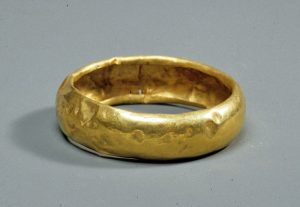
Gold was always abundant in ancient Egypt. While there is evidence of its use since Predynastic times, its exploitation and the intensification of the industry reached a peak during the Ptolemaic period. In fact, the prominence of gold and bronze in the Ptolemaic currency system sets it apart from other Hellenistic kingdoms. Gold staters were part of the earliest currencies of Hellenistic Egypt already in 323 BCE. After a hiatus in gold production while the Alexandrian mint was busy recoining tetradrachms, the production of gold coinage was resumed in 294 BCE, this time bearing for the first time the image and legend of Ptolemy as King, like the example below from the Kelsey (Lorber 2012, p. 213).
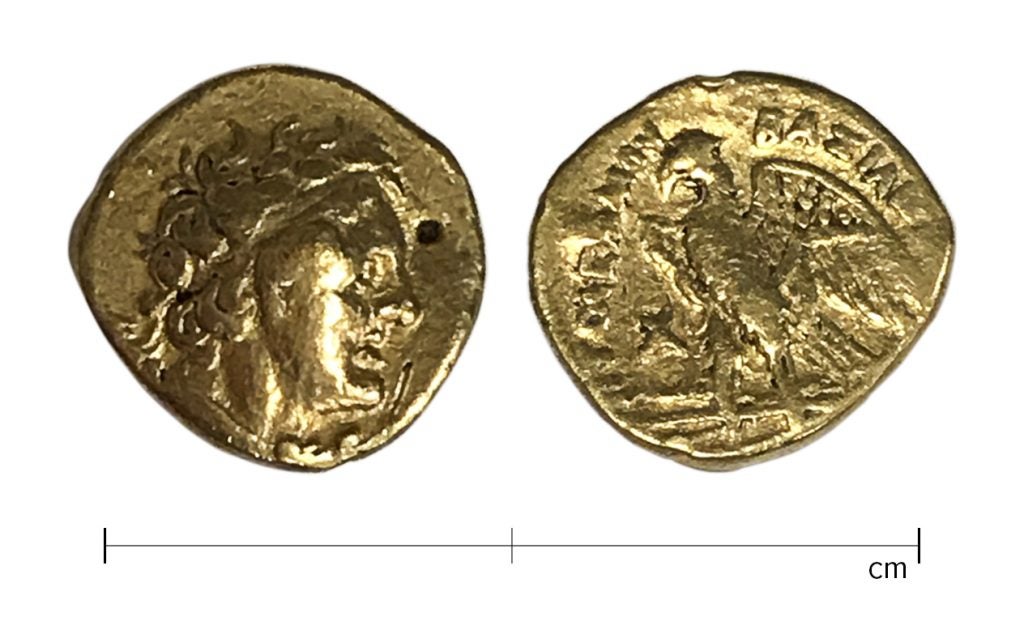
Perhaps the best introduction to understanding Ptolemaic gold coinage is Julien Olivier’s and Catharine Lorber’s 2013 article “Three Gold Coinages of Third Century Ptolemaic Egypt,” in which the authors present the results of die studies undertaken on three Ptolemaic gold coinages from Alexandria. This work is particularly important because it provides evidence for the absolute dating of two of the coinages, and more importantly, shows how Ptolemaic gold minting practice was not systematic or constant, but rather “a response by the royal authority to a particular historical context” (p. 128).
As we will see from the papyrus discussion below, it is clear that the Ptolemies were absorbing metal and re-minting it as part of their closed currency system, but their need and use of gold bullion was large, which also fostered their exploitation of the Eastern Desert mines. Well-known literary descriptions of the mines and the vast amount of gold available to the Ptolemies may be found in the works of Agatharchides of Cnidus, Diodorus, and Suetonius (Faucher 2018).
A project in the Eastern Desert of Egypt led by Bérangère Redon and Thomas Faucher explored the Egyptian gold mining industry in the area during this highest period of exploitation. Their research is the most up-to-date published material on the subject (to my present knowledge), so I invite you to check their publications for further bibliography and details of their fascinating project. Just this past August, their excavation and project results were published in the volume Samut Nord: L’exploitation de l’or du désert Oriental à l’époque ptolémaïque. My copy should be arriving soon, but fortunately for us, they have also published several open-access articles (see bibliography, below). These describe their project and provide us with images and information on important archaeological contexts that allow us to understand the logistics of the mining industry, such as this stone mill used to grind ore.
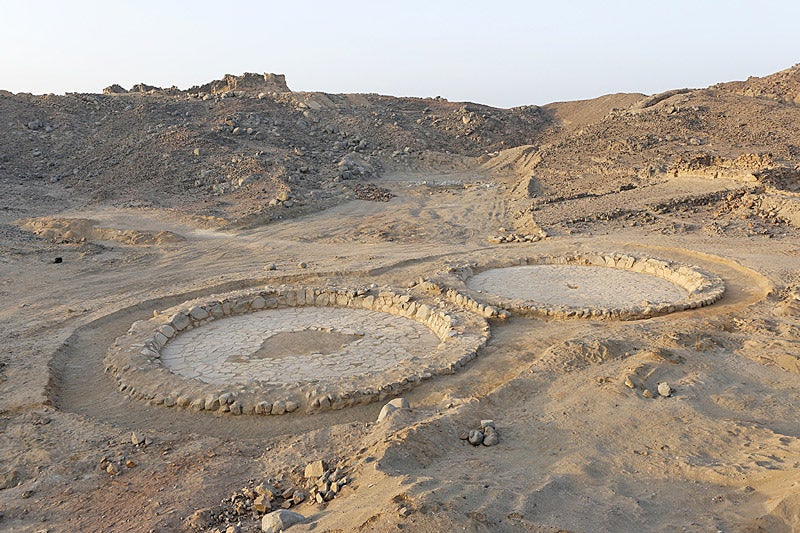
Faucher has potentially identified two particular monetary series that may have substantially benefited from the new gold coming from these mines (Faucher 2018, 30), which allowed them to mint heavy gold coinage such as this example of a mnaeion of Arsinoe II in the Kelsey, weighing 27.75 grams.
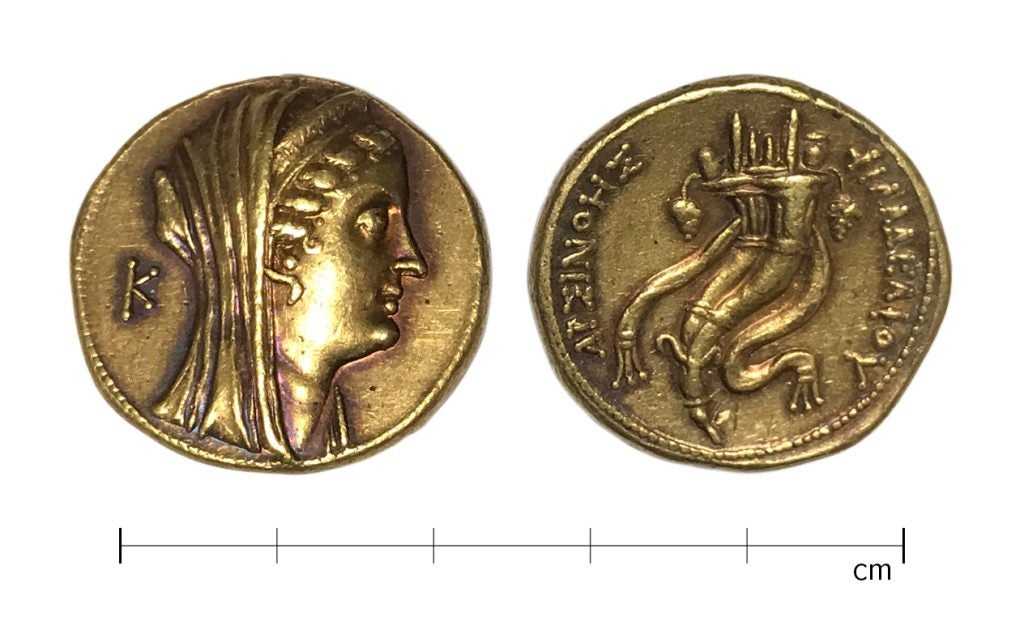
Recent quantifications have estimated that the Ptolemies struck between 50 and 100 tons of gold. Only a small quantity of the gold accumulated was used for coin, however, as Faucher (2018) asserts: “Whatever the calculations may be, studies show that the gold used for minting coins constituted only a small part of all the gold accumulated by the royal treasury.” And indeed as we will see from the text below, the Ptolemaic closed currency system fostered the absorption of foreign gold coinage for the minting of new Ptolemaic coins. But gold was minted in order to make payments, and in periods of high state expenses, the need for gold bullion for coinage would have been great. Papyrological evidence available from the Archive of Zenon of Kaunos allows us to get a glimpse of the logistics of currency conversion in this period (as well as the general policy of filling up the royal coffers as much as possible!).
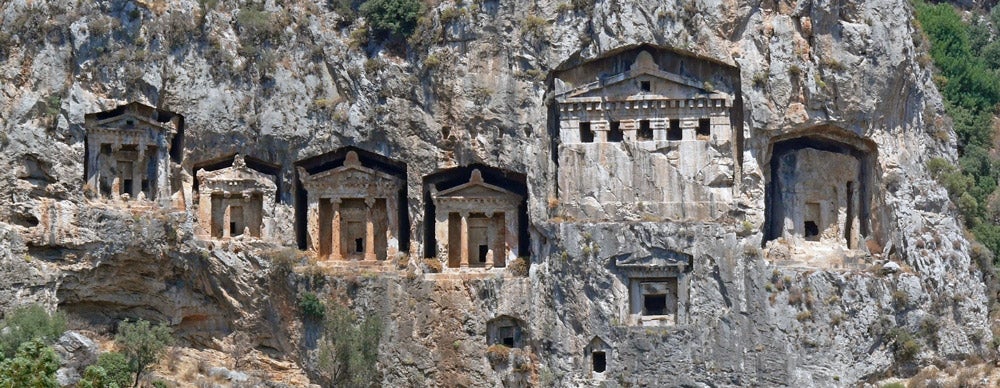
Originally from Kaunos, in Asia Minor, Zenon was the private secretary of Apollonius, the finance minister to Ptolemy II Philadelphus and Ptolemy III Euergetes. He lived in the town of Philadelphia in the Fayum Oasis. The archive comprises 1,800 texts, which date from 261 to 240 BCE. I am very tempted right now to talk more about the archive because it is quite rare to have such a detailed glimpse of the inner workings of the central administration of a Hellenistic kingdom. The length of this post is limited though, so I will just point you to some interesting aspects of a particular text, P.Cairo Zen. 59021, whose original Greek text can be accessed here, along with extensive bibliography, images, and commentary. If you want to learn more about the archive as a corpus, Trismegistos has a nice detailed description of its contents. The text dates to 258 BCE, slightly before this issue of our Arsinoe II coin was minted but contemporary with the period of active mining in the Eastern Desert.
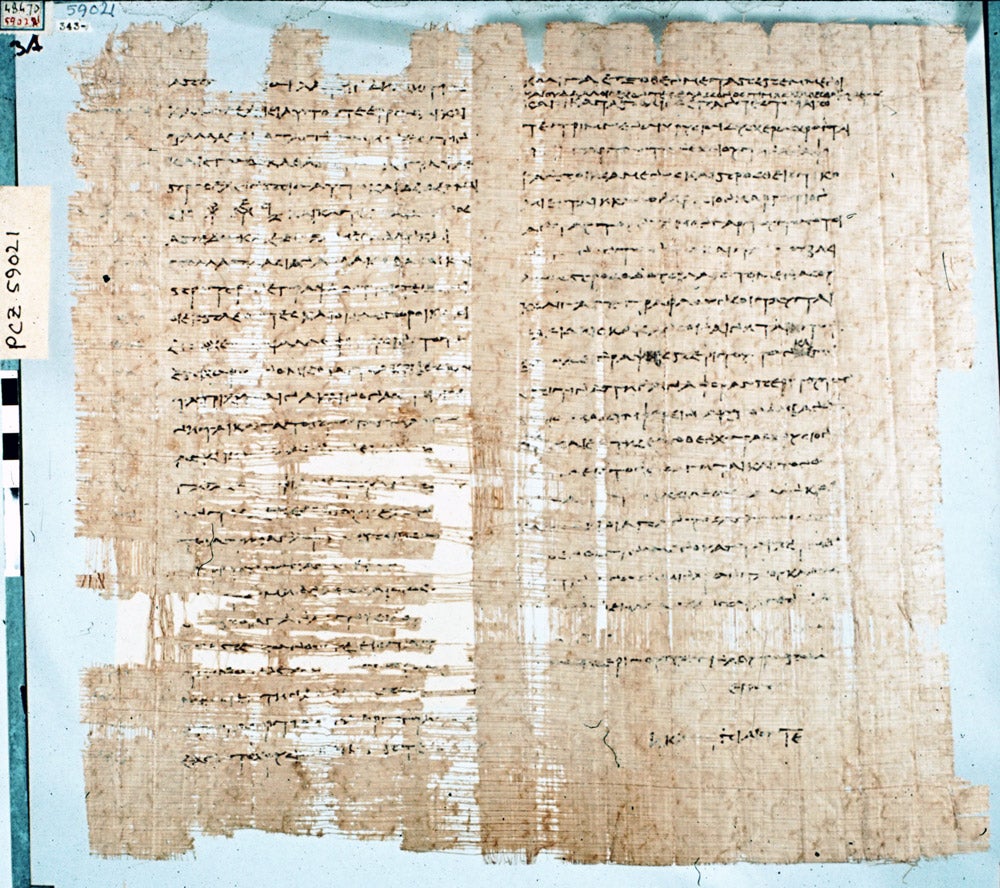
P.Cairo Zen. 59.021
“Demetrius to Apollonius, greetings. It is well if you are in good health and everything else is as you wish. As for me, I am devoting myself to what you wrote me to do: I have received 57,000 [drachmas?] of gold which I minted and returned. We would have received many times as much, but as I have written to you before, the foreigners who came here by sea, the merchants, the forwarding agents, and others, bring their own fine local coins and the trichrysa, to get them back as new coins, in accordance with the ordinance which instructs us to take and mint them, but as Philaretus does not allow me to accept them, we have no one to refer to on this matter, and are compelled to not accept them. The men are furious since we refuse [the coins] at the banks and at the … and they cannot send [their agents] into the country to purchase merchandise, but they say their gold lies idle and that they are suffering a great loss, since they brought it from abroad and cannot easily dispose of it to others even at a lower price. As for the people in the city [Alexandria] they are all reluctant to use the worn gold coins. For none of them knows to whom he can refer and after adding a little get back fine gold or silver in exchange. In the present circumstances, I see that the king’s revenues are suffering no small loss. I have therefore written to inform you, and if you think fit, write to the king about it and tell me to whom I can refer on these matters. For I believe it is advantageous that as much gold as possible should be imported from abroad and that the royal coinage should always be fine and new, at no expense to the king. It is not proper for me to say in writing how some people are treating me, but as soon as you are back you will hear. … Write to me on these matters that I may follow your instructions. Year 28, Gorpiaeus 15.”
There are various aspects of interest in the text, but it is not without its problems. The translation that I have provided above comes from Austin 2011 (no. 299), but the text contains lacunae that require interpretation, and so Panagopoulou (2016) has done a detailed analysis of the grammar as well as the sense of the document, with a particular emphasis on the interpretation of line 16. Nonetheless, we can infer from the text that normally when traders and foreign merchants brought coined gold in good condition, there was no problem melting it down in order to mint Ptolemaic gold coins, but when the gold was brought as “fine plates,” as Panagopoulou has suggested, and not as coined metal, it could not be accepted and turned into new Ptolemaic gold coins to be used in the province, since the gold had not been assayed.
Olivier and Lorber (2013) have suggested that this letter, whose desperate tone perhaps hints at a low output of gold coins by the mint of Alexandria or a lack of bullion, could be understood within the context of the production patterns of earlier mnaeions of Arsinoe II that they identified. The date of the letter, 24 October 258, “would correspond to a period of low production” (Olivier and Lorber 2013, 87).
There is certainly much more to say and learn about Ptolemaic gold coinage, particularly in light of Redon’s and Faucher’s new work in the Eastern Desert, but it will have to wait for another post. I look forward to learning more about the Ptolemies through studying the historical contexts of the coins present at the Kelsey. Thanks for reading this far if you did, and hope you stay healthy!
* * * * * * * * *
Bibliography
Austin, M. M. The Hellenistic World from Alexander to the Roman Conquest: A Selection of Ancient Sources in Translation. Cambridge: Cambridge University Press, 2011.
de Callataÿ, François. “L’instauration par Ptolémée Ier Sôter d’une économie monétaire fermée.” In L’exception égyptienne? production et échanges monétaires en Egypte hellénistique et romaine, edited by Frédérique Duyrat and Olivier Picard, 117–34. Etudes alexandrines 10. Cairo: Institut français d’archéologie orientale, 2005.
Faucher, Thomas. “Ptolemaic Gold: The Exploitation of Gold in the Eastern Desert.” In The Eastern Desert of Egypt during the Greco-Roman Period: Archaeological Reports, edited by Jean-Pierre Brun, Thomas Faucher, Bérangère Redon, and Steven E. Sidebotham. Collège de France, 2018. https://books.openedition.org/cdf/5241.
Lorber, Catharine. “The Coinage of the Ptolemies.” In The Oxford Handbook of Greek and Roman Coinage, edited by William E. Metcalf, 212–34. Oxford: Oxford University Press, 2012.
Olivier, Julien, and Catharine Lorber. “Three Gold Coinages of Third-Century Ptolemaic Egypt.” Revue Belge de Numismatique et de Sigillographie 159 (2013): 49–150.
Panagopoulou, Katerina. “Gold in Ptolemaic Egypt: Exchange Practices in Light of P.Cair.Zen. I 59021.” Zeitschrift für Papyrologie und Epigraphik 197 (2016): 179–90.
Redon, Bérangère, and Thomas Faucher, eds. Samut Nord: l’exploitation de l’or du désert Oriental à l’époque ptolémaïque. Fouilles de l’Institut français d’archéologie orientale du Caire 83. Cairo: Institut français d’archéologie orientale, 2020. https://www.rhone-auvergne.cnrs.fr/en/node/558.
